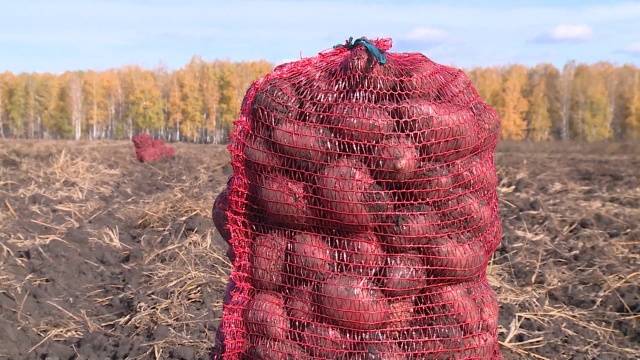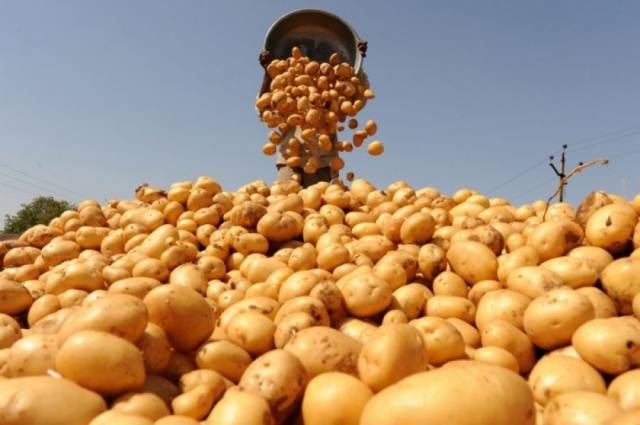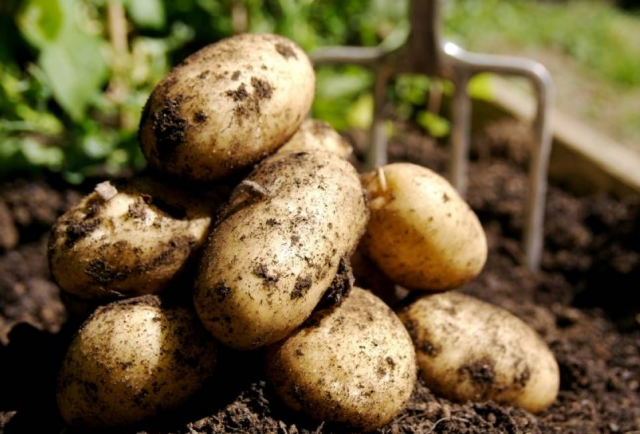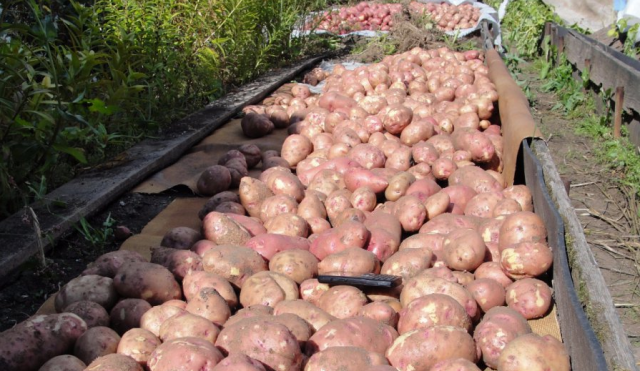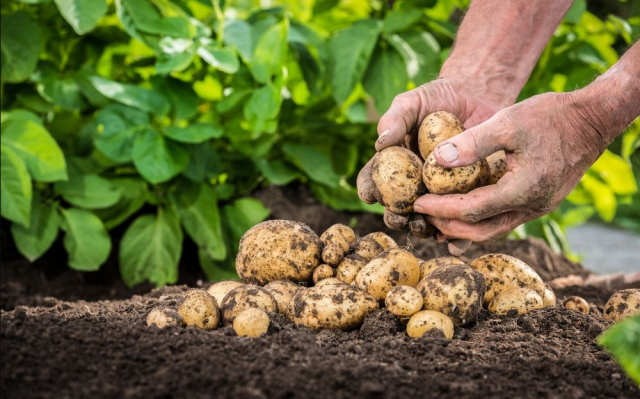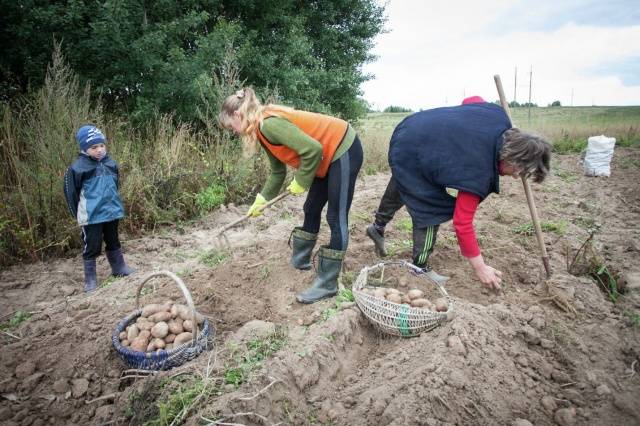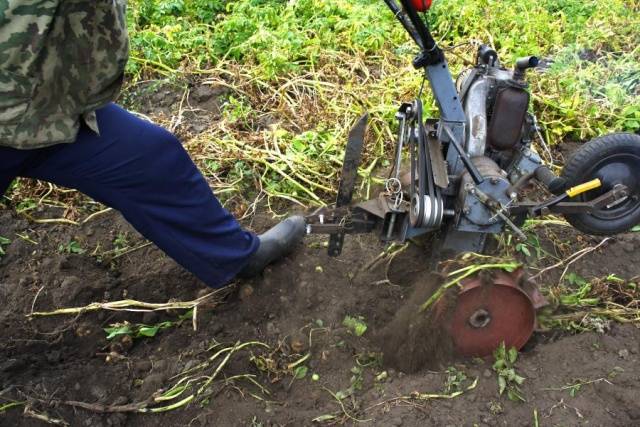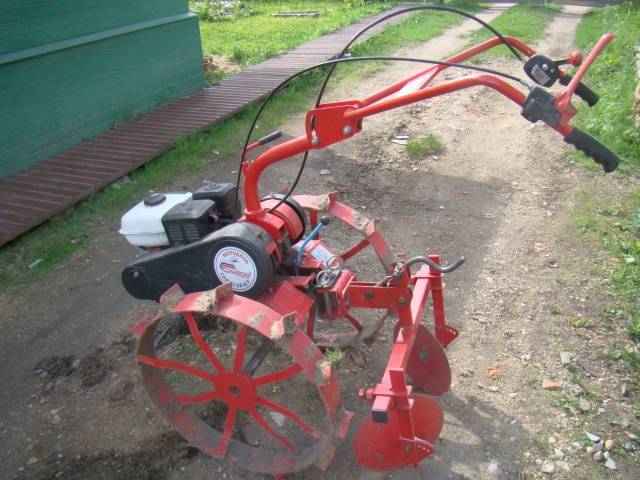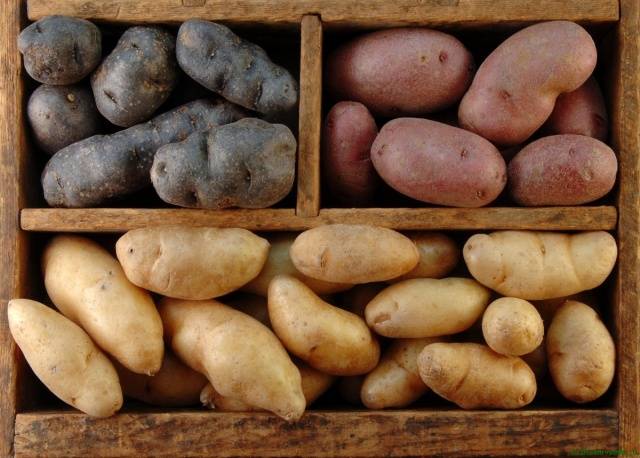Content
The harvest period is a well-deserved reward for summer residents for hard work. However, so that vegetables do not deteriorate and do not rot during storage, they must be collected on time. If the ripening period of vegetables growing on the aerial part of the bush can be seen immediately, then this cannot be said about root crops. Therefore, the question of when to harvest potatoes so that they are preserved until spring is quite relevant. This will be discussed in the article.
It's no secret that you should dig up potatoes in late summer or early autumn. But how do you determine the exact timing? On terms harvesting potatoes influenced by many factors, including:
- Climatic conditions of the region.
- Soil fertility.
- Potato variety.
- Landing dates.
- The amount of fertilizer applied.
Factors affecting the ripening of potatoes
There is no exact date for harvesting potatoes. There is no specific day in 2021 when potatoes can be harvested. The ripening period of the tubers largely depends on when the potatoes were planted in the ground. So, when planting tubers in late April, you can dig potatoes in early August.
Digging potatoes also depends on the variety used for growing. More details on this will be provided below. The potato crop is also influenced by how the owners looked after the crop throughout the summer.
Some begin to dig up tubers at the end of July. This is not done for storage, but for preparing dishes from young potatoes or for selling on the market. However, you cannot harvest young potatoes for storage for the winter. The young peel is easily damaged, as a result of which the tubers, dug out prematurely, will quickly deteriorate and rot.
So, we suggest that you consider several factors that affect the ripening period of potatoes:
- Soil fertility. If the soil is low in nutrients, then the time to dig potatoes will come earlier. Well-fertilized, fertile soil provides a longer period of tuber growth, until late autumn.
- The amount of fertilizer applied. Potato ripening period will be prolonged due to organic fertilizers.
- The amount of moisture. The lack of moisture during the growing season of the root crop accelerates the ripening of potatoes. It is not surprising that in dry summers the harvest is usually poor, as the tubers come out small.
Weather forecast and harvest
The ripening period of tubers can be controlled to some extent by humans, while the weather conditions are not. Before deciding when to dig potatoes, it is important to observe the forecast.
- If prolonged rains are expected, then the potatoes should be harvested immediately. Otherwise, waterlogged soil will provoke a deterioration in the quality of tubers, rot and diseases of root crops. On the other hand, when harvesting from wet soil, a lot of soil sticks to the shovel and tubers, which complicates the work process and makes it less enjoyable.
- Cold can cause blackening of the tubers. The optimum air temperature during the harvesting period is + 10 + 17 ° C.
- Digging potatoes should be carried out on a fine, clear day. Once dug up, you can air dry the tubers.
- If it is already cold in the autumn in the morning, then it is better to dig potatoes closer to lunch. The air will warm up by noon and will be more consistent with the temperature of the soil, which still stores summer heat.
- We must harvest before frost. Otherwise, the tubers will no longer be suitable for storage and consumption.
How potato variety affects the harvest period
The biological characteristics of the variety have a direct impact on the harvest period. Early varieties should be harvested in late July - early August. Medium early potatoes are harvested in mid-August. The collection of mid-season and mid-late varieties of potatoes is carried out at the end of August or throughout September.
Depending on when the tubers were planted and the period when you can dig potatoes is determined:
- Mid-season varieties are harvested 90–100 days after planting.
- Medium late potatoes are harvested 100–110 days after planting.
- Late varieties - 120 days after planting in the ground.
If prolonged rains are not expected and the bushes were not infected with late blight, then the harvesting period can be postponed for a short time.
This event will protect tubers from infection and speed up the ripening process of the crop.
If you decide to leave early and mid-early potatoes for digging in the fall, then you must remove the tops. This is done at the end of July, if the potatoes are early and in the first week of August, if they are medium early. During the next month, the tubers can still remain in the soil, if weather conditions permit.
The ripening stage of the potato can also be determined by the condition of the skin. The thin and easily peeled skin indicates that the time to dig the potatoes has not yet come. You can dig up 1 bush for a test, if the peel is not ripe, then you have collected immature, young tubers. Please try again after 7-10 days.
Tuber harvesting methods
Digging potatoes can be done in several ways. Most often, gardeners use ordinary garden tools for harvesting - a pitchfork and a shovel. However, this method requires a lot of effort on the part of the summer resident. If the age is already closer to old age, then the lower back may not withstand such loads.
To facilitate harvesting, special devices were designed, such as a walk-behind tractor and a potato digger. Harvesting is much faster and easier with agricultural equipment.
But in order for the digging of potatoes to be carried out using special equipment, you first need to cut off all the tops. After a few days, you can start harvesting. All elements of rotation on the walk-behind tractor must be well lubricated. Parts loosening the soil should be pre-cleaned of hardened clay, earth and pebbles. Dull edges must be sharpened.
Rules for operating a walk-behind tractor when collecting potatoes
There are a number of rules to follow when harvesting potatoes:
- So that you do not have to change the direction of the walk-behind tractor when planting potatoes, you need to form even rows.
- Row spacing should be the same. The wheels of the walk-behind tractor should be placed in the aisle to prevent damage to neighboring tubers.
- When working with a cultivator, it is better to dig out the tubers every 1 row. Otherwise, one wheel of the vehicle will move along the trampled path, and the other - along the plowed land.
Before collecting potatoes from the beds, you need to prepare a place to dry the tubers. To avoid mechanical damage to root crops, it is better not to drop them. Otherwise, their shelf life will be reduced several times.
It is better to reject unsuitable tubers immediately on the field, so that later you do not have to waste time on it again. Good tubers are bagged and stored in a cool, dark place. To ensure that no sunlight breaks through to the harvest, the bags can be additionally covered with a thick cloth.
If after harvesting on the field there are weeds and tops, then they can be left in the sun for several days, and then collected and buried in a compost pit. However, if fungus or other diseases are present on the tops, then it should be burned.
Conclusion
By observing the above recommendations, you can harvest potatoes with a minimum of effort, and the crop will be stored until the next harvest.
So that you can get more information, we suggest you watch a video on the topic:
